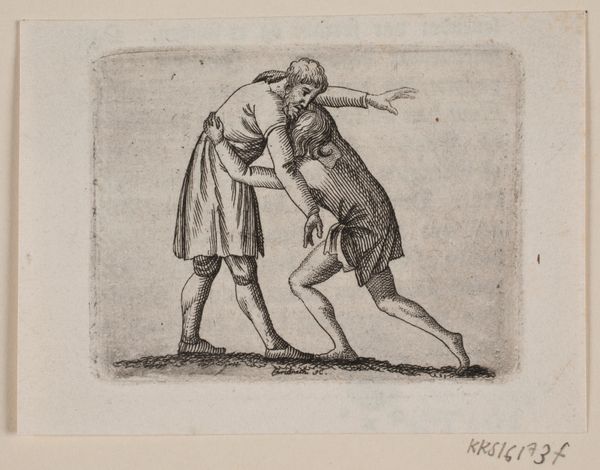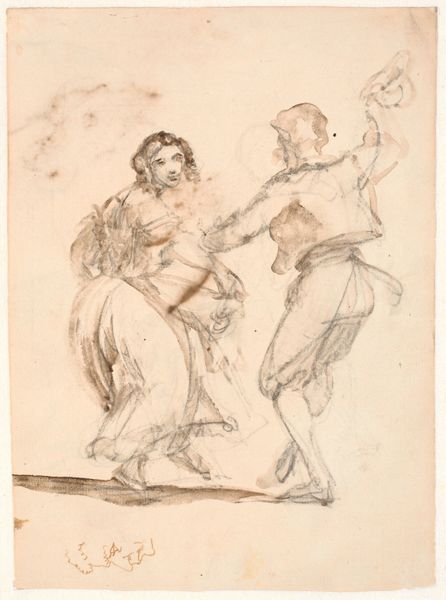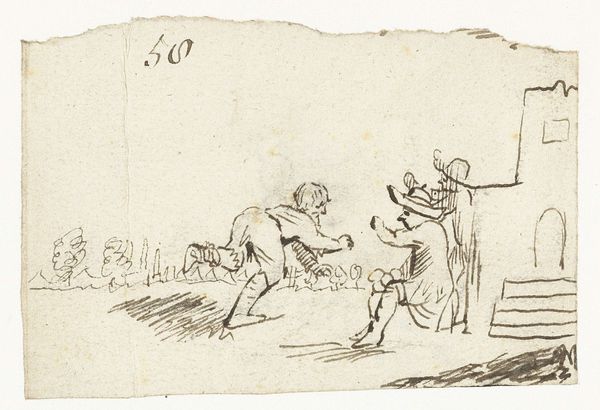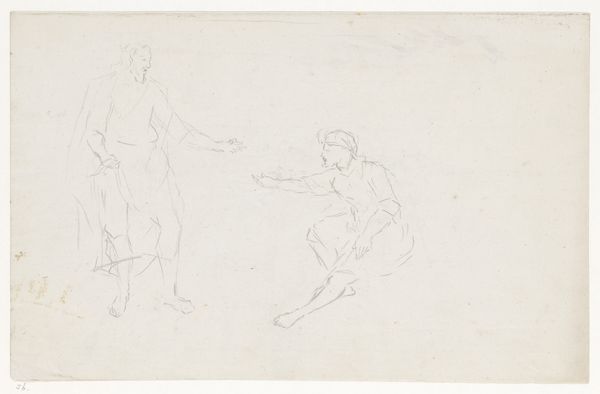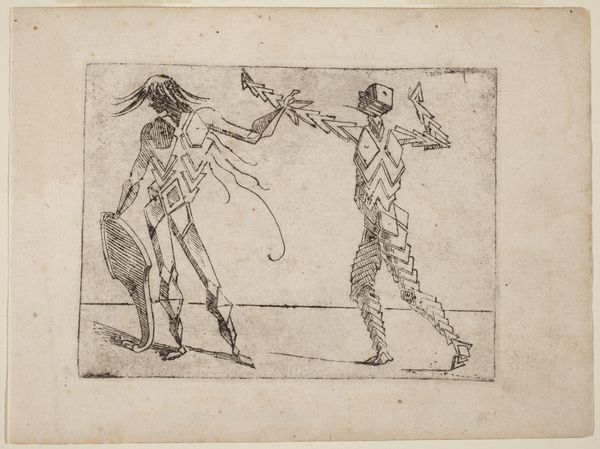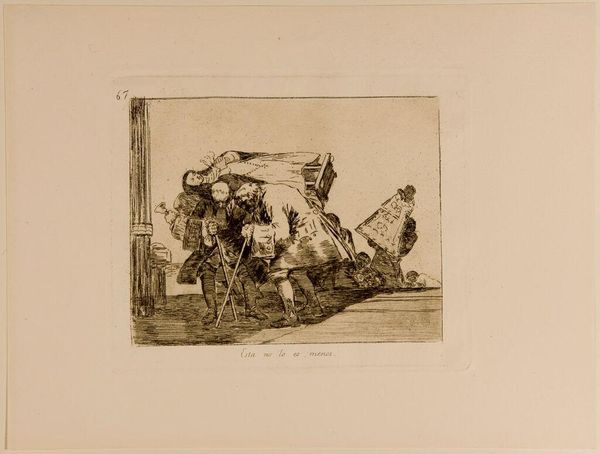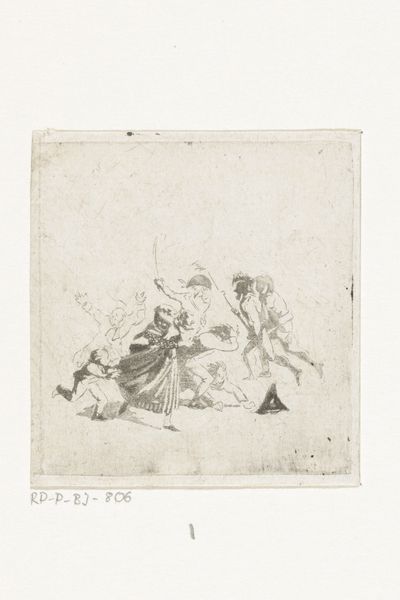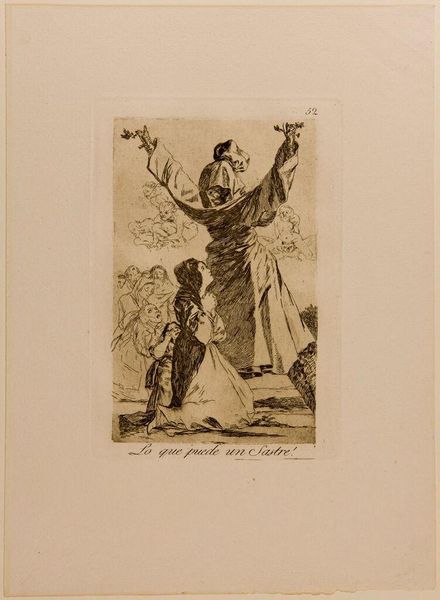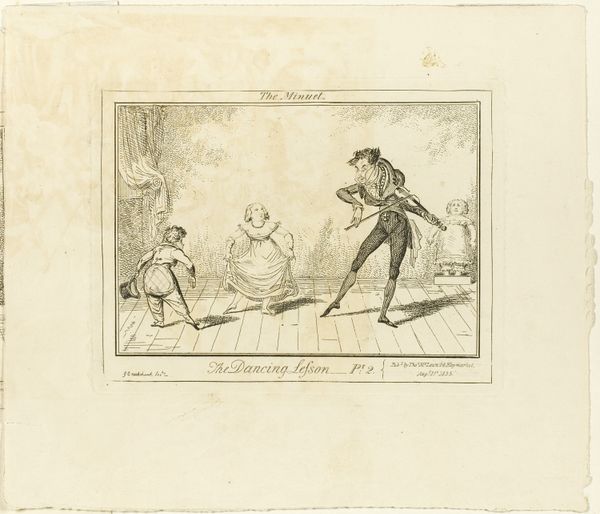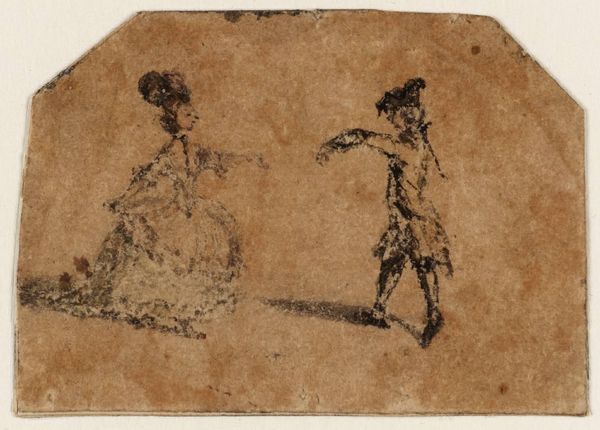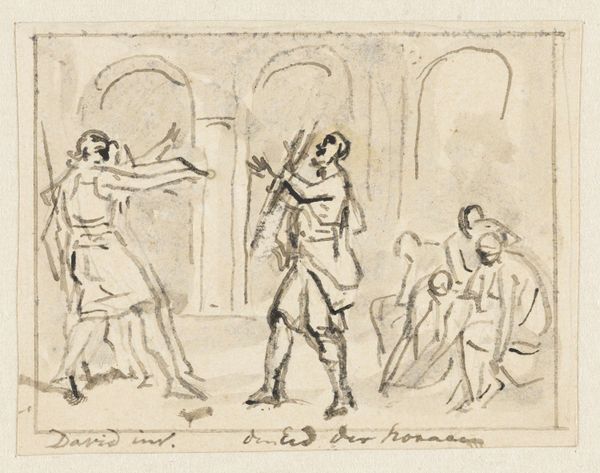
Anine Frölich og Pierre Jean Laurent i et optrin fra Galeottis ballet "Zigeunernes leir", Den kgl. danske Skueplads 1773 - 1776
0:00
0:00
Dimensions: 120 mm (height) x 130 mm (width) (bladmaal), 160 mm (height) x 170 mm (width) (brutto)
Editor: Here we have Peter Cramer’s drawing, "Anine Frölich og Pierre Jean Laurent i et optrin fra Galeottis ballet 'Zigeunernes leir,' Den kgl. danske Skueplads" made with mixed media and watercolor sometime between 1773 and 1776. It feels so immediate, almost like a quick sketch capturing a fleeting moment on stage. What strikes you about it? Curator: Immediately, I think about the materiality of theater during this period. Consider the resources consumed – costumes fashioned from textiles produced by exploited labor, the wax candles illuminating the stage purchased with wealth accumulated through trade. It is easy to forget these systems of labor which upheld elite spectacle. How does that knowledge change your interpretation? Editor: It definitely gives a different weight to what’s depicted, realizing the cost and labor behind this "fleeting moment." Curator: Exactly. Think about the artist's own labor, too. Cramer meticulously used drawing and watercolor—relatively accessible mediums. He memorializes the spectacle but flattens it in this portable format. It wasn't a high art like an oil painting, yet it still functions as documentation and promotion. Is Cramer participating in that system, commenting on it, or both? Editor: I see your point. Maybe he’s acknowledging that even "low" art like this drawing is still embedded in the structures of labor. He’s preserving the record of a cultural event, and at the same time participating in the network of its production and consumption. It is a more ambivalent situation than I first assumed. Curator: Precisely. These "ephemeral" art forms and experiences depend heavily on resources and often hide complicated labour arrangements. Focusing on these elements allows a nuanced discussion to emerge, that exceeds only art for art's sake. Editor: Thank you; it really opens my eyes to a wider context surrounding these depictions! I now see how material and social realities shaped not only the performance itself, but its representation, too.
Comments
No comments
Be the first to comment and join the conversation on the ultimate creative platform.
